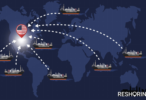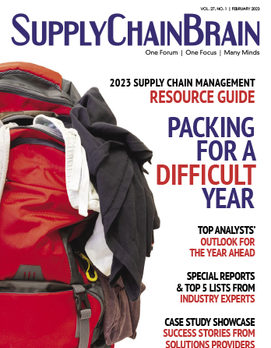
In order to access your account, please login below.
Think Tank
Laying to Rest Supply Chain Concerns About Blockchain

Photo: iStock.com/Khanchit Khirisutchalual
Blockchain has been heralded as revolutionary for many industries, but no application of the technology has undergone the hype cycle boom-and bust quite as much as the supply chain. By enabling secure and transparent transactions, blockchain has the potential to reduce inefficiencies and costs, while increasing trust and visibility among participants. Electronic bills of lading in particular have become a top-of-mind solution in this regard. But implementation of blockchain in the supply chain has been shown to have its own challenges, one of which is dramatized by the Prisoner's Dilemma.
This classic element of game theory illustrates why two individuals might not cooperate, even if it appears that it would be in their best interest to do so. Two prisoners are separately given the option to either confess to a crime or remain silent. If both remain silent, they will receive a lesser sentence, but if one confesses and the other doesn’t, the confessor will receive a lesser sentence, while the other will receive a harsher one. If both confess, both will receive harsher sentences.
This scenario can be applied to the general thought around blockchain in the supply chain, whether correct or not. In a blockchain network, participants are incentivized to act in their own best interest, which simultaneously benefits the broader network. “Trustless” is a commonly used word in this case, as the lack of trust in others is negated by the trust in the network itself. If a participant decides to share information on the blockchain, the primary concern is that it risks revealing information to its competitors. This is the equivalent of confessing in the Prisoner's Dilemma scenario. However, if no one shares information, the benefits of the blockchain are never fully realized, and the entire network suffers.
This created a perceived, although not wholly accurate, dilemma for participants in the blockchain network. Due to the public nature of transactions, some executives believed that if everyone shares information, everyone benefits. But if one decides not to share information, it gains a competitive advantage over the others. And if everyone decides to hold back, the benefits of the blockchain are never realized, and everyone suffers.
Corporations don’t like feeling like the only nude person on the beach. Absent requirements of 10-Q and 10-K forms, most companies would never publicly disclose detailed financial information. This was the initial holdup to adoption of public blockchain networks such as Ethereum by enterprises, and why they pushed for private, walled gardens like Tradelens, built on permissioned systems like Hyperledger. As we saw however, these walled gardens never truly realize the benefits of the technology to their full potential.
As the technology has matured and evolved, blockchain no longer technically faces the same questions about privacy. Technologies such as zero-knowledge proofs and different types of privacy-preserving transactions on-chain as well as in layer-two systems enable corporations to reap the benefits of public blockchains, while protecting private competitive data at the same time.
Electronic bills of lading are a prime example of how blockchain technology can be applied in supply chain management and beat the hype cycle. Bills of lading are legal documents used in international trade that outline the details of a shipment, such as the quantity and type of goods being shipped, the destination, and terms of sale. These documents are typically paper-based and can be easily lost or manipulated, leading to significant delays and costs.
By using blockchain technology, bills of lading can be digitized and secured, reducing the risk of fraud and increasing efficiency. However, the adoption of blockchain-powered electronic bills of lading has been slow, due to general hesitance by industry to embrace new technology, and the outdated perception of data exposure. Such fears now seem to be subsiding.
There’s significant promise in the adoption of electronic bills of lading. According to a report by the World Economic Forum, it could save the global economy up to $1 trillion over the next decade. By reducing the risk of fraud and increasing efficiency, it has the potential to transform international trade. As a result of this tremendous upside, the Digital Container Shipping Association (DCSA), a consortium of nine leading ocean freight carriers, announced the transition to a fully standardized electronic bill of lading industry-wide by 2030.
“The benefits of electronic bills of lading for all parties involved are obvious,” says Stefan Kukman, chief executive officer of CargoX, a blockchain bill of lading provider that recently signed a partnership agreement with the Egyptian government. “Financial savings are considerable, the time saved in delivering documents is remarkable, and the reliability and trustworthiness of electronic trade documents, especially on the blockchain, [are] amazing.”
Blockchain moved from industry golden child to pariah in a speed rarely seen in technology. Now, however, it promises to play a critical role in IT infrastructure. We’ve moved past the initial hype and trudged through the “trough of disillusionment.” Are we entering a golden age of use cases for blockchain in the supply chain? It looks very promising.
John Monarch is managing consultant with BX Advisors.




